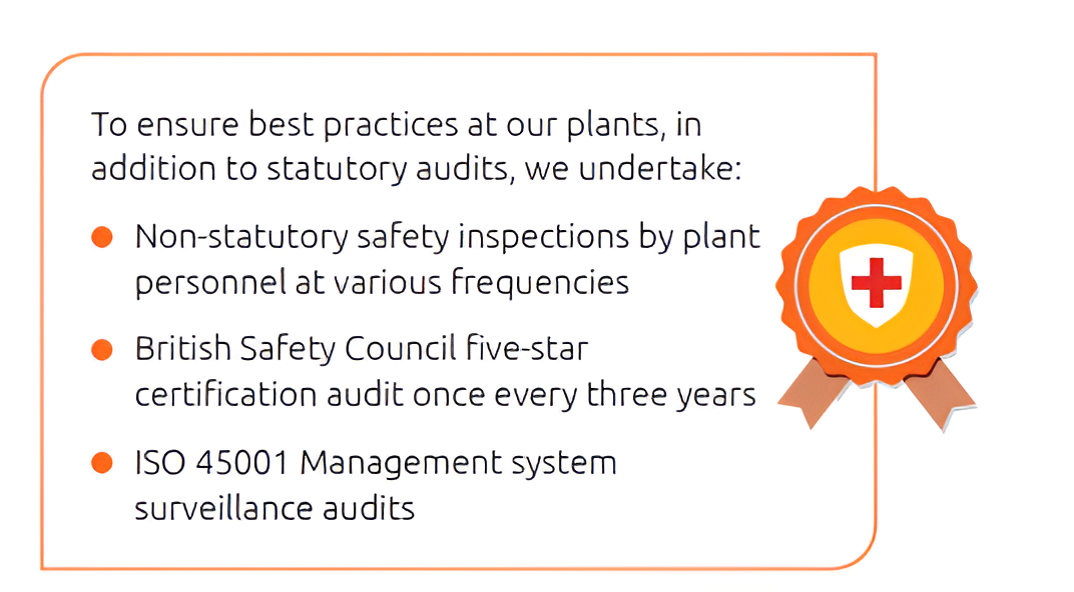We are leading the way in deploying state-of-the-art technological solutions to reduce human-machine interaction,
ultimately improving process efficiency and safety.
- At the design stage, a Hazard and Operability (HAZOP) study is
conducted to decide the configuration of manufacturing equipment
- Manufacturing of paints and intermediates is done through an
automated process with a Distributed Control System (DCS)
- The solvent and monomer tanks are equipped with dual controls to
ensure that materials are not overfilled. Additionally, a pneumatic
conveying system is used to transfer solid raw materials to the paint
processing equipment
- Automated system of packing lines of paints, transportation, and
sorting of packing material
- Robots are employed for palettising paint containers

Putting our employees first
In order to ensure the well-being and safety of our
workforce, our occupational health and safety (OHS)
framework is rigorously implemented. This framework
incorporates regular assessments of potential health
risks, conducted by an industrial hygienist every three
years, to systematically identify and address hazards
within our plant premises. Moreover, we conduct
weekly monitoring of Volatile Organic Compound
(VOC) emissions and fortnightly sampling for
Respirable Suspended Particulate Matter (RSPM) at
selected locations. These samples undergo meticulous
analysis by accredited external laboratories.
Additionally, ventilation studies are carried out
biennially or in response to any changes in design or
processes by qualified professionals across all our
plant areas to uphold a secure working environment.

Safety monitoring mechanism
Our occupational health and safety (OHS) framework is
designed to systematically identify various types of workplace
hazards. This involves conducting Hazard Identification
and Risk Assessment (HIRA) to assess general work-related
hazards, utilising Bow-tie Analysis, HAZOP, and Quantitative
Risk Assessment (QRA) for process safety hazards, conducting
Fire Risk Assessment for fire-related risks, and performing
Manual Material Handling Risk Assessment for tasks involving
manual material handling.

Moreover, we have implemented a robust incident reporting
system named ‘iSafe’ in all our manufacturing plants. In the
event of an incident, a dedicated investigation team promptly convenes at the affected plant.
By employing methodologies such as the 5-Why Analysis and Fishbone diagrams, they rigorously
analyse the incident to identify its root causes. The findings, potential causes, and the resulting Corrective and Preventive
Actions (CAPA) are thoroughly reviewed at various levels within our organisation. These insights are then shared across all
plants, cultivating a culture of shared learning. Furthermore, incident reports and the associated CAPA are presented to the
Board of Directors quarterly.





